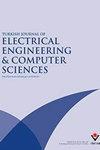基于YOLO和lsh的视频流分析景观,用于道路网络的短期交通密度监控
IF 1.5
4区 计算机科学
Q4 COMPUTER SCIENCE, ARTIFICIAL INTELLIGENCE
Turkish Journal of Electrical Engineering and Computer Sciences
Pub Date : 2023-10-07
DOI:10.55730/1300-0632.4036
引用次数: 0
摘要
由于现代道路每天都变得越来越拥挤,在高峰时段监控交通的任务很困难。在此领域中已经创建的自动化解决方案在短时间内处理大量数据时效率低下,导致效率低下和结果不一致。在本研究中,YOLO(你只看一次)和LSH(位置敏感散列)算法与Kafka架构相结合,创建了一种在实时场景中评估流量密度的方法。我们的概念是专门为车辆网络设计的,通过收集来自交通监控摄像头的实时流数据并使用YOLOv3算法将其转换为帧(每分钟11帧)来预测给定位置的交通密度,这是通过建议替代路线和避免交通拥堵来执行有效交通分流的关键参数。然后,预测的密度被投影到谷歌地图上,以方便当地客户。比较研究?S的结果表明,我们的策略始终如一地准确预测车辆密度,在所有条件下的准确率都超过90%。它在准确率和召回率方面也有显著提高,提高了4.08%。本文章由计算机程序翻译,如有差异,请以英文原文为准。
YOLO and LSH-based video stream analytics landscape for short-term traffic density surveillance at road networks
The duty of monitoring traffic during rush hour is difficult due to the fact that modern roadways are getting more crowded every day. The automated solutions that have already been created in this area are ineffective at processing enormous amounts of data in a short amount of time, leading to ineffectiveness and inconsistent results. The YOLO (you only look once) and LSH (locality sensitive hashing) algorithms are combined with the Kafka architecture in this study to create a method for assessing traffic density in real-time scenarios. Our concept, which is specifically designed for vehicular networks, predicts the traffic density in a given location by gathering live stream data from traffic surveillance cameras and transforming it into frames (at a rate of 11 per minute) using the YOLOv3 algorithm, which is a crucial parameter for performing effective traffic diversion by suggesting alternate routes and avoiding traffic congestion. The predicted density is then projected onto Google Maps for the convenience of local clients. The comparative study?s results demonstrate that our strategy consistently and accurately predicts vehicular density, with an accuracy of more than 90 percent under all conditions. It also shows a significant improvement in both precision and recall, with a 4.08 percent improvement.
求助全文
通过发布文献求助,成功后即可免费获取论文全文。
去求助
来源期刊

Turkish Journal of Electrical Engineering and Computer Sciences
COMPUTER SCIENCE, ARTIFICIAL INTELLIGENCE-ENGINEERING, ELECTRICAL & ELECTRONIC
CiteScore
2.90
自引率
9.10%
发文量
95
审稿时长
6.9 months
期刊介绍:
The Turkish Journal of Electrical Engineering & Computer Sciences is published electronically 6 times a year by the Scientific and Technological Research Council of Turkey (TÜBİTAK)
Accepts English-language manuscripts in the areas of power and energy, environmental sustainability and energy efficiency, electronics, industry applications, control systems, information and systems, applied electromagnetics, communications, signal and image processing, tomographic image reconstruction, face recognition, biometrics, speech processing, video processing and analysis, object recognition, classification, feature extraction, parallel and distributed computing, cognitive systems, interaction, robotics, digital libraries and content, personalized healthcare, ICT for mobility, sensors, and artificial intelligence.
Contribution is open to researchers of all nationalities.
 求助内容:
求助内容: 应助结果提醒方式:
应助结果提醒方式:


